UP TO THE MINUTE
Enhancing Safety in Sheet Metal Bending - PODCAST TRANSCRIPT
April 24, 2025 at 11:00 a.m.Editor's note: The following is the transcript of a live interview with Chad Rowe of MetalForming LLC. You can read the interview below, listen to the podcast or watch the recording.
Intro: Hi everyone and welcome to this episode of Metal Talk. I am your host, Karen Edwards. And today's topic, it's going to be really, really important and interesting I think. And I am sitting here, well, sort of virtually with Chad Rowe from MetalForming. And Chad, welcome.
Chad Rowe: Hi there. How are you this afternoon?
Karen Edwards: Good, good. And today's topic for this Metal Talk, if I can get my slide to move I'll show you, is going to be all about enhancing safety in sheet metal bending. And I tell you the folks at MetalForming and Chad in particular are experts in the field. And before I jump into the topic and introduce Chad, I do want to mention that this is being recorded. So if you want to share this after the fact, it'll be available online within one to two days, typically on our metalcoffeeshop.com. And I do have the chat open, so if you do have questions, feel free to drop them in there. We have some time at the end where we'll go back through your questions or if you just want to say hi and tell us where you're from, feel free to do that too. We'll keep an eye on the chat as we go. All righty. Let's get started. Chad, would you please introduce yourself to everyone and tell us a little bit about your background and what you do?
Chad Rowe: Well, I certainly hope that you have some newcomers, because some people might be getting tired of hearing me talk a little bit, but that's okay. It's not going to stop me from talking. So I've been with MetalForming since 1999. I started as a service technician and I've done a little bit of anything and everything. So my years and experience in the industry, in today's world is getting fewer and far between. People typically don't stay in a one place this long. I'm stubborn that way I suppose. But my current role and position is a director of business development. What does that mean? We're all in sales. MetalForming is always looking for that next innovative product or that next solution that customers have been asking for. It's also building relationships and maybe crossing over to some industries that our equipment hasn't been thought of in the past. So there's a lot that goes into that.
Karen Edwards: Yeah. Well, I'm really glad you're here today. We love having you as a guest and we don't get tired of you, because you bring such great knowledge and information to these conversations. So I want to go to this next slide and we're going to start with talking about manufacturing and some injury statistics. But before we dive into this one, I want to talk about a contractor, who maybe is just getting into metal, maybe they're thinking about purchasing their own metal bending machine. Once you have that machine and you start bending your own panels, you've now become a manufacturer and you need to think a little bit differently when it comes to safety. And Chad, can you just get us going here with a little bit about the dangers that come with manufacturing?
Chad Rowe: Yeah, absolutely. Especially when I transitioned from, I've been purchasing product and I've just been installing, there's a whole world of safety requirements when you're actually on a job site that need to be taken care of. But then there's a whole different set of safety. Some of the same things apply, such as housekeeping type things. But as I purchase equipment, as I start using this equipment, I am truly manufacturing my own goods to use. So I am a manufacturer and that opens up a whole different set of safety requirements and topics. Unfortunately, manufacturing continues to be ranked in the top two of injuries reported by the labor of bureaus and statistics. I can't say that word. Statistics.
Karen Edwards: There you go. I'm going to share the graphs.
Chad Rowe: Thank you. And as you can see those injuries and those reports, this is the current data, I'm sure in the next two years or within the next year, new sets of data will be released. But we can see then that the trends are coming down, that these injuries are slowly trending in the downward direction, which is a good positive thing.
Karen Edwards: Get the next one there.
Chad Rowe: Yeah, so here we can still see that manufacturing continues in the private sector as well. And these are injury cases that are reported.
Karen Edwards: Right.
Chad Rowe: Injury cases that are reported. Unfortunately not all injury cases are reported. So we can use, we'll take a little look into some of the technology and devices that are in play today, as to why those numbers are able to start coming back down. So going right into a little bit of the mechanical and the machinery history, the early adoption of equipment and machinery used in manufacturing were all manually operated devices and those had inherent dangers. The technology didn't exist for safety protocols or safety devices. Once then, the equipment and the technology advanced and started using some electric and hydraulic equipment, there began to be some improvements as far as safety goes. But again, those devices were still a little bit limited. And now today, with today's technology and safety standards, when we're talking about these CNC controlled machines and even some of the fully automated systems, the safety standards in 2025 are much different than they were in 1825 or even 1925. The safety equipment that is available today is much different than it was even just 10, 15 years ago.
Karen Edwards: It is and technology just continues to make things safer with anything, with the manufacturing machinery, with vehicles, with a lot of stuff. So I think that's great that we're seeing these numbers go down because of some of these new technologies, but we still have things happen. So we still need to think about safety.
Chad Rowe: So in thinking about safety, why is this such an important? Well, one, there can be a large financial burden when an injury does happen or when an accident does happen. And that our people, our employees, that's our biggest investment that we're making into a company. So some of the ways that you can help protect your investment and again, especially if you're somebody who has been on a job site, there are on the job site safety briefings that happen every single day. There's no reason that those same principles don't apply. They do still apply even inside a facility in a manufacturing environment. And again, I think it is a great point, Karen, that you brought up, even on Monday when we were talking about this, that you may only have one machine in a shop. That's still a manufacturing environment. So safety meetings, training, what kind of training? Well, there's training about how to use the equipment and then there's training about how to use the equipment properly, keeping your work area clean. And then, as we're going to explore today, what types of safeguarding exist to protect the equipment and your largest investment?
Karen Edwards: Your people. Yeah, that's for sure. It's always being aware and especially when you mentioned training, if you hire a new person, they're not going to know all of that intuitively right off the start. So it's really important to spend that time and that energy in making sure everybody's safe, because at the end of the day, that's no accidents. We want everyone to go home.
Chad Rowe: Well and I can only imagine today's times, when it is difficult to get people, somebody's first day or two on the job and if they see an environment that they don't feel safe in, it doesn't present itself well for welcoming them back to work the next day. So all of it helps support keeping the attention of people.
Karen Edwards: For sure. Okay, so let's talk about some of the things that should be taken into consideration in the manufacturing environment.
Chad Rowe: So there's some really basic simple things that people can take a look at. One to your general housekeeping items is the floors, your workspace area free of trip hazards. These are all your basic things. Distance. If we talk about distance, how far away from a certain piece of equipment should people be and that differs for different types of equipment. What is the response time to that safeguarding equipment? Is the machine stop immediately or does it take it some time to respond before it actually stops the complete motion? Just as an example, a saw. Well, a saw blade, typically you can turn all the power off on it, but it may continue to turn until that blade runs out of energy. There's mechanical guarding, there's electrical guarding. We're going to look at some specifics then about what is a mechanical guard. It could be a post that's provided in an area so that a forklift doesn't get too close to a piece of equipment. So some of these items that we're talking about about safeguarding don't have to be some new innovation.
Karen Edwards: Right, right. MetalForming and Chad, with your knowledge and your experience, you guys really help contractors who are bringing in new equipment, setting up a shop. Is safety one of the things that you review during that decision-making process of what they're going to buy?
Chad Rowe: It is a topic that we do discuss. It is a topic that we must discuss and it differs. That conversation then differs based on what is that equipment that we're talking about? And there's some equipment that is inherently more safe than others and we will explore into that. But a fully automated system provides a much different level of safety that I think a lot of times people don't think about when they're looking at this big picture of, okay, well I've been in business for X number of years and I've had this piece of equipment, this piece of equipment, now I'm ready to look at. Okay, what's beyond. I think safety is a big factor when looking at some of these higher end systems that maybe gets overlooked at times or we're just looking for the activity and throughput when there's some other factors that can be-
Karen Edwards: Part of the decision, yeah.
Chad Rowe: ... used as part of that decision making process. Absolutely.
Karen Edwards: Yeah. Okay. So now when it comes to safety, who makes the rules?
Chad Rowe: So the ANSI B-11, this is the safety standards. These are all the protocols. This is the document that is the overarching guidelines for everything in the workplace. A lot of people sometimes believe that, "Well, it's OSHA that I have to watch out for." OSHA doesn't actually make the rules. They are a rule enforcer. So the OSHA is actually using the ANSI B-11 safety standards has their guidelines. So if hopefully everybody's familiar with OSHA, occupational safety, health awareness, I do believe or association is-
Karen Edwards: Administration.
Chad Rowe: Administration, yeah. Google is always a good helper in that area.
Karen Edwards: Your friend.
Chad Rowe: But nobody wants to hear the word OSHA in your shop. So again, this ANSI B-11 is available online. It is not free. It must be purchased, but what's a small investment when it comes to safety and again, protecting your biggest investment?
Karen Edwards: Exactly. OSHA with a violation of safety standards usually comes a pretty hefty fine. That in and of itself is not good, but ultimately it's your people that you are keeping safe by following these safety standards. So definitely look into it. I have a link that we can drop in the chat if you're interested in checking out this guide. I'm just going to copy it right here and let's move on to talk about some of these specific safety features.
Chad Rowe: Sure. So in the bending machines, we will talk just a little bit about bending machines and also this type of protection can be used in many other applications. There has been and I'm going to go forward a little bit and then I'm going to come backwards a little bit.
Chad Rowe: Over the period of time of, again, this last 10 to 15 years, I'd mentioned that the safety items and the technology and the safety devices has really changed. And 10, 15 years ago, there were some safety devices that were available that were not effective, because they didn't allow the piece of equipment to still be able to perform its intended function. So what does that mean? That means that if a bending machine is supposed to bend, this system then should protect the bending machine, should protect personnel, but I still need to be able to use that machine to bend metal. So light curtains or even a three-point laser safety system that are available today are able to provide a protection that allows the system to stop if these lights, the light curtain or just laser safety system are interrupted and then it could be interrupted for any reason.
Chad Rowe: It could be a person, it could be a tool or it could just be the metal that you're trying to bend in the case that it is that metal that you're trying to bend. These safety devices will allow the system to continue operating, but at a regulated speed. That regulated speed, which comes from the NCB-11 standards, is a movement or a motion at 10 millimeters a second. For all of us Americans who use Imperial, that's roughly three-eighths of an inch per second. So the systems today are able to protect the equipment and protect the machinery and still allow that machine or that operation to continue and allow that machine to still be productive. And that's a big change. That's a big change. Previously, the systems would just stop and you were not allowed to then move forward. So the system then, a lot of people chose not to use safeguarding, because it shut their machine down. How do you do your job? Or you couldn't.
Karen Edwards: If there's anybody on here who doesn't know what a light curtain is, that was me a couple of weeks ago. I Googled it. But maybe Chad, you can just explain.
Chad Rowe: Yeah, sure. So a light curtain is simply, let's see, how do we paint a verbal picture here? [inaudible 00:18:37] is placed in a series of lights that is placed in an array. This device can be typically placed in a vertical fashion, could be horizontal, could be at an angle. They can be small devices, two, three inches up to a six-foot tall device and a light curtain is sending a signal to a receiver or to a reflector. Maybe that's an easier way to describe it. And then we have attached to this light system a little brain and if this light in any of these areas gets interrupted, then the system will stop, because it's no longer making that transition from the sender to the receiver, whatever that receiver is.
Chad Rowe: So then this little brain or this controller says, "Hey, you have to stop working. You must stop your movement." Then that control or that brain of this system can be programmed to allow certain functions to continue. And then, these lights in the example where maybe this light curtain is five or six feet tall, I can define in a certain range. If the light curtain is interrupted in this certain range, then I can allow that system to keep operating at this controlled safe speed. If it's interrupted outside of that area, then maybe I choose to stop all the motion and I don't allow that to continue. Hopefully, that-
Karen Edwards: Very customizable?
Chad Rowe: It's very customizable to, we used in a lot of different applications, in a lot of different ways. There are many different types of, light curtain is kind of a generic term that is common in the industry. A light curtain can sometimes be a single point laser. Typically, that's not a light curtain, but some people might use that terminology. There's a couple of brands that are really deep into safety and that's all they do. S-I-C-K or Sick, that is a common brand, a common name and their purpose in life is to provide safety for equipment. There's another brand called Feasler. They have a little bit different offerings. They offer a system that is used by several different vending machine manufacturers and that utilizes a three-point laser system, so that I get different functions by using these three points.
Chad Rowe: So again, much like that description, even with the light curtain, if one of these points is broken, then maybe a certain function is limited or stopped. If all three are blocked or communication is, then no operation can continue. So again, all of these systems now are available in smaller packages. So maybe previously where a system physically just was too big, it wouldn't fit into an area that I needed it, that technology has advanced so that we can get those safety devices into areas where previously we couldn't, as well as then the technology behind them. Having the brain power and the technology then to be programmed to function, how I would like for it to function and keep my people safe.
Karen Edwards: Yeah. Yeah. I mean, the way technology advances so quickly in every day, just because you couldn't have something a few years ago, check into it again, because it's quite possibly that you will be able to.
Chad Rowe: Yeah, absolutely. I mean, think about our parents washing machines coming into their life and how it changed their lives and now I can control, I don't do it. Trust me, I don't do this, but I have the ability to control my washing machine through my phone.
Karen Edwards: Right, yeah. It's kind of crazy.
Chad Rowe: It is. Absolutely. I don't want to talk to my washing machine.
Karen Edwards: No. Yeah, just clean my clothes for me. So here's some little collage of pictures of some of the sensors that we were talking about.
Chad Rowe: Yeah and those devices. So in that upper left area, that's a type of a laser scanner and that brand Feasler, some different zone light curtains. It's in the upper right shielding or guarding that can be part of the mechanical guarding. And within where these systems are placed, all is relative to, we had mentioned that distance factor earlier, how a piece of equipment reacts. How quickly can it stop? All of these factors going to the right system and when should I use and where should it be placed?
Karen Edwards: Lots of things to take into consideration, but a lot of these companies too that provide these solutions, I'm sure provide assistance too in making sure you are getting what you need and that you're setting it up the right way.
Chad Rowe: Absolutely. Any of the suppliers that we work with that offer integrated safety into their equipment, they are relying on safety and industry safety experts to take into these distance factors. The time factor, what's the response time of the piece of equipment from the time that light curtain is broken to how many milliseconds does it take for the system to stop? So all of, like I said, the integrated systems that come from the suppliers that MetalForming operates with, they're industry safety people.
Karen Edwards: Yeah. Excellent. Okay. Let's talk about some of the mechanical safeguards.
Chad Rowe: Yeah, absolutely. How do you keep people safe? Well, one of the ways is to essentially prevent them from getting into areas that may be dangerous. So there are some different ways. In the picture here shown, we have some safety fencing and these particular types of fences are electrically interlocked, so that if I open a door or if I open a gate, it will prevent that machine from being allowed to continue to operate. In some cases, we don't have such sophisticated devices. We use just a bolted fence type scenario, where I do not have access to any of the hardware from the outside area, so I can't take apart the fence to allow myself to get inside. There's a lot of different ways, but the mechanical safeguard is a very safe and very popular way. Just keep people out of areas that they shouldn't be in. People will find a way in. Why they do that, I don't know, but they will.
Karen Edwards: Yeah, yeah. It's so true. So with this mechanical locking system, the sub-bullet there, it talks about an approved safety system. Can you explain what that is?
Chad Rowe: Yeah, there are any, I can't just go to a Home Depot or your favorite electrical supply house and pick up a piece of a fence or build a fence that would typically be considered a safety approved system. Even a strictly mechanical guard, being this mechanically fastened fencing, must come from an approved safety system supplier and these people are meeting this ANSI B-11 and these standards and these items may or may not be approved by OSHA, but they've definitely been approved by an overarching authority that gives it a approved safety rating.
Chad Rowe: These systems, then here's the downside. Here's why people don't go that route. You know what? I'm just going to go and make me a couple posts and I'm going to put some sort of guarding up. It's because a truly certified safety system costs more money. It costs more money, but again, what's the price? What's the price for protecting our investment?
Karen Edwards: Right. Safety is not a DIY project by any typically.
Chad Rowe: Yeah. There's no person that has started a DIY project and said, "Let me consider all the safety factors first."
Karen Edwards: Right.
Chad Rowe: No chance. Just jump in there and get it done.
Karen Edwards: Yeah, make the investment. At the end of the day, everybody's safer. You're going to be more productive. Your people are going to be safer. Don't try to do it yourself.
Chad Rowe: Absolutely.
Karen Edwards: Now, you mentioned earlier when we were going through the history of the different types of manufacturing, from manual to mechanical and the best for last is fully automated. Let's talk a little bit about what this means and what it looks like.
Chad Rowe: Yeah, so typically a fully automated system is we'll have likely multiple levels of protection. In certain areas, it may just be a mechanical, it may be safety fencing that you can't climb into or get access to the system. And other areas where I do need access, I may have that same safety fencing, but I use an electrically interlocked gate or an access door to allow myself in. In some cases, it may be an area that is protected by a light curtain, where a fence or even a gate or a door may not be practical. In an application that people from the RoofersCoffeeShop or MetalCoffeeShop in this architectural industry may be familiar with is if I'm loading, if I have an automated coil system and I need to load in or remove a coil, a safety fence with a gate may not be the most practical solution, I might need a light curtain.
Chad Rowe: Then that gives me more room and flexibility to be able to enter that area to exchange these coils. When that light curtain is turned off, then the complete system, depending on how it's controlled, may need to stop its complete operation. But I have that flexibility of these different systems. A key point in my opinion when I'm looking at these fully automated systems is, what is that right protection for me and my business? There are some cases when I may have multiple moving parts in one automated system. What happens when one of those functions stops working? Does it shut the complete system down or am I able to block curtains? Or maybe it's a safety zone that allows me to be able to come in and still use the other two functions of that system, so that I'm not completely blocked from production. How does that system work best for your needs? There's a lot to consider beyond, okay, what's the purpose of this automated system? And then, how does it work and why is the safety system an important factor in consideration for this system?
Karen Edwards: Wow, that's a lot to think about and to figure out. So I know that you guys help a lot, right?
Chad Rowe: You took a pause. Was that a lot of, there was a lot of things there.
Karen Edwards: There was. Yeah. That was a lot to think about. What am I using the machine for? What am I producing? What if something is triggered? You had my head spinning there for a little bit when I was thinking about all of that. So how do you help contractors figure that out?
Chad Rowe: So we ask a lot of questions, real honestly. We ask a lot of questions and then we enter a dialogue with that customer and every customer has different levels of understanding of these systems and what safety is. So it all begins with just communication. Okay, what is your intended purpose? What is it that you're trying to accomplish with this system? What does it need to do? How do we protect it? What is the environment that that piece of equipment may be placed in? Because sometimes the environment may not be a friendly environment for such an automated system. And then, okay, what access might you need to get into the system for maintenance, for adjustments, for one function stops working? I don't want that one function to prevent me from operating this piece of equipment. So it's conversations. And then through these conversations, then we also educate what types of systems work well in different scenarios.
Karen Edwards: Yeah. And I know that we visited your booth at IRE and we saw some of what's new and I remember you explaining some safety features that were in one of the machines that was a new feature and is part of that accomplished through software updating? How does that work?
Chad Rowe: Yeah. Some of it is done through software. Some of it is a combination. It's typically a combination of hardware and software. So in certain areas, we may place a pause run button or maybe we place an emergency stop button in an area that we didn't realize was, "Hey, this is in the area where the operator is standing," or, "This is an area where somebody might walk by and we need to provide a safeguard or some sort of safety device in that specific area, that maybe even as a manufacturer or suppliers as they're evaluating their equipment." Customers are always the good test. They're always the best test.
Karen Edwards: Yeah. They're the ones that are using it and giving you feedback as to what their needs are and that-
Chad Rowe: They're the ones that find a way to break things.
Karen Edwards: That's an interesting way to look at it.
Chad Rowe: Well and I don't mean that they try to break things. I want to quantify that just for the viewers. It is they have a job to do and they have production demands. They have manufacturing demands. They need to produce X amount of product in a day and they will do what is necessary to achieve those goals. And that's where we find out that, "Oh, you need to be in this area that we thought you didn't need to be." So that's when they'll try to break things. They discover things that maybe, again, as an equipment builder or our suppliers, they evaluate everything as much as they can, the true test that comes from our customers. Absolutely.
Karen Edwards: Yeah, yeah. Okay. So let's talk about some myths that exist out there about safety and address them, because I mean, these myths may be keeping people from implementing proper safety measures.
Chad Rowe: Yeah. So a couple of the key points that are on here, my output's going to be affected. Machine doesn't move as fast as my old machine did. It's going to stop me from being able to meet my goals or I can't make a certain profile, because the safety system stops me. Those are all true things that used to be in place with older technology. Today's technology does not limit any of the machine's performance factors. Does it in certain situations slow the machine down? Yes, but those are requirements that are just like speeding through a school zone. There are speed limits in a school zone for a reason.
Chad Rowe: And again, same principle applies. If I'm in a certain area and I need to perform a certain function, the machine's speed may be limited, but that's required and I'm still able to use the system as it's designed and be productive. So I think there's a lot of older technology, people that have had machines maybe for that 10, 15, even 20 years, that they may have investigated some safety options in the past and there weren't necessarily good safety options for a lot of different types of equipment, where today there are on. There really are.
Karen Edwards: So remember that. The times, they are a changing. Technology can do more and we've talked about it being smarter and only targeting certain areas or doing different things and being able to customize it. So 100% you need to look into that. And this next slide, we're going to talk about choosing the right system. And we've touched on this throughout, because as I said, my head was kind of mind-boggled of thinking of all these things, but let's just kind of, if we can pull it all together for everybody, how do you know what is right for you and what should you consider?
Chad Rowe: As a business owner, they have a lot of things to think about and to consider when purchasing a piece of equipment, when running a business in a day-to-day basis and choosing the right safety system, what is the right system for me? Those are always difficult decisions. What is that operational impact on a safety system? Maybe I make two less pieces per day, but the environment that my group is working in is a much safer environment, which keeps people happier and keeps them wanting to come back and know that the company that they work for is invested in their safety. What is a fully protected system? Is there in some cases, as we were talking about that fully automated solution, maybe I don't need that fully automated system, but the level of safety that it provides me is the important factor. Maybe there's been some accidents, maybe I can produce an equal amount or more, because I'm not interrupting that system.
Chad Rowe: Then of course, there's always what is the cost versus what are the benefits? As somebody who's been in the industry for a long time and I've had the unfortunate experience of sitting through some depositions and being deposed myself in the event of some accidents, there is a limit, right? There is a limit to what a business can absorb as far as what does it cost, but I would suggest and that talk with your insurance provider. There may be some actual discounts that you may be able to get from your insurance company, because you are adding additional safety measures. So while that cost initially may have some value to it and you may get a reduction in another area, that may be very helpful. So there's a lot to consider. There's a lot to consider, but I think probably one of those key things that people don't always think about is, may I get a savings in some other area?
Karen Edwards: Yeah. Didn't think about that. What you're paying for workers' compensation insurance, if you're reducing those risks to your workers, you could be saving in your monthly premium.
Chad Rowe: Yeah.
Karen Edwards: Yeah. All right. Well, we're going to open it up for questions here in a couple of minutes, so if you've got them, fire them up in the chat. But I want to talk, we're talking about choosing a safety system, different types of systems. Can you tell me, if I'm talking to Chad, I'm going to buy a MetalForming machine to put in my shop, what kind of safety features does it already have? Or is it like options on a car? I want the heated seat or I want the, how does that work?
Chad Rowe: Oh, that's a great question.
Karen Edwards: Sorry, we didn't talk about this ahead of time.
Chad Rowe: No, that's fine. This is a very good question. A lot of those things depend on the type of equipment and then real honestly, the price point or the capabilities, maybe that price point's not the right one, but the capabilities of a system. So for example, a portable role former, I have doors that can be open and I could be exposed to rotating equipment. Those doors have safety interlocks, so that when I open that door, the system will stop operating or stop turning, so that I'm not allowed to be inside that system and be exposed to this rotating operating equipment. All of our powered equipment as minimum of one, if not multiple emergency stop, push buttons, kick bars, methods to stop the machine at any moment, the CNC folders that operate and bend in an up only direction have always, for years had something called a safety stop or some people call it a mute point, where the system is allowed to come down to a certain point at a high rate of speed, but then below that safety stop or that mute point, then that speed is slowed down.
Chad Rowe: I can assure you that systems, 10 years ago, companies had the ability to go in and make some tweaks and maybe that safety speed was not where it should be. Today's systems, then you're not able to go in and adjust those speeds. So you have the assurance that at that safety stop and below, the system is moving at a safe speed and with the technology behind it, it is a regulated safety speed so that it is the correct safe speed. Do some of the end users like it? If they've had a machine for 20 years and they get this new one, one of the first calls we always get is, "This thing is too slow." How do I speed this thing up? Well and overall, the other operations of the system are actually faster.
Karen Edwards: It balances out, right?
Chad Rowe: Yeah, there has been, but visually to the eye, right? Nobody, that's always the running joke when we talk with some of our European suppliers, they always ask, "Well, what do you need?"
Chad Rowe: And my answer is always, "Faster, faster and more."
Chad Rowe: So then, now going back, sorry, back to the original question. When I started getting into some of the machines with a little more capabilities, such as a double bending machine, there is different levels of protection that are standard on that equipment than with some other options. So for example, the double folder, double bending machine, that MetalForming offers has several different layers of standard protection. If an operator is inside a light curtain, he can still be operating the machine, but it's going to move at this safety slower speed. We have the three point laser safety system that becomes in place if I'm inside that light curtain. As long as I'm outside of the light curtain, then the system can operate at its full speed and fully automated. And then, there's safety fencing, there's interlocks, there's door interlocks. So a lot of the safety devices and safety standards that come, sorry, that are standard with the machinery is dependent on the capabilities of that system as well.
Karen Edwards: That makes sense, that different machines, different functions are going to have different safety features. And I think it's important to note, everybody wants faster, but often if you're moving too fast, that's when an accident is going to happen. That's when something's going to go wrong. So I understand the slowing down in certain situations, but like you said, it gets made up for in other areas as well.
Chad Rowe: Yeah, yeah.
Karen Edwards: Excellent. Righty. Well, let's open it up to questions. We did have one question asking about if this presentation would be available later and yes, we will have this online on metalcoffeeshop.com within 24 to 48 hours, so by Friday it should be out there. If you want to share this, if you're in a shop that maybe you don't feel safe and you want to pass it on to a supervisor, a business owner, I think this would be well worth it. Or if you're wondering, evaluating your own shop, certainly Chad would be happy to talk with you about your operations and what your needs are and help you figure out a solution.
Chad Rowe: Yeah, absolutely. I think we spent a lot of time educating ourselves on what is our business. We educate ourselves on how to install a roof, educate ourselves in a lot of areas and the safety is often a secondary thought as to, "Oh, well, we didn't think about that."
Chad Rowe: Well, why did you think about it? Because some accident happened at work or maybe it was a near miss. There's a lot of resources and again, does this mean that every company needs to go out and hire a safety director, a safety standard person? No, you don't have to have that, but absolutely a knowledgeable, maybe it's all employees should be knowledgeable about safety.
Karen Edwards: It really should be all.
Chad Rowe: It really should be all. To what level, that differs.
Karen Edwards: Not even the machine operator, Chad, but maybe somebody in another part of the building that walks through the shop or comes out to talk to somebody. They're not familiar with the equipment and they may not be even thinking about the dangers and what could happen and I've seen these machines in action folding metal. Yeah. You don't want to be anywhere near that where you're going to be injured.
Chad Rowe: Yeah. The first deposition I actually sat through 20 some years ago was, the person who got injured was not an operator. He was nothing more than a janitor and his job that day was to clean the machinery and an accident happened. So absolutely, does not have to be the operator of said piece of equipment. It can be someone just walking through a shop.
Karen Edwards: Yeah. Wow. Wow. Well, thank you, Chad. This was really, really interesting, really important. As I said in the beginning, thank you for being here, for sharing your knowledge and all this invaluable information on the safety, making bending safer. I love it.
Chad Rowe: Yes. Thank you very much for having me. I have to close with one other keynote.
Karen Edwards: Sure.
Chad Rowe: For all of my Atlanta Braves fans out there. Don't worry, we're going to be just fine.
Karen Edwards: If you didn't know, MetalForming and Chad are located near Atlanta.
Chad Rowe: Yeah, my love for the Atlanta Braves goes way back to the '80s when they were no good.
Outro: Well, there you go. You're not a fair weather fan. You stick it out. All right. Well, thank you everyone for tuning in. If you want to learn more about MetalForming, they do have a full directory on both RoofersCoffeeShop and MetalCoffeeShop. You can find their contact information there, tell them you watched this webinar and you're interested in learning more about safety. Thanks for joining us today and we hope to see you on a future episode of Metal Talk. Be sure to visit Metalcoffeeshop.com to catch this one on demand or other episodes that you may have missed. We hope to see you next time. Bye-bye, everyone.

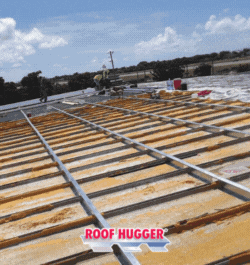


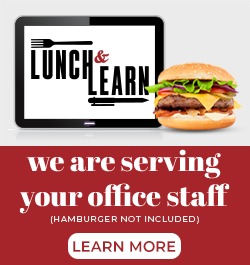


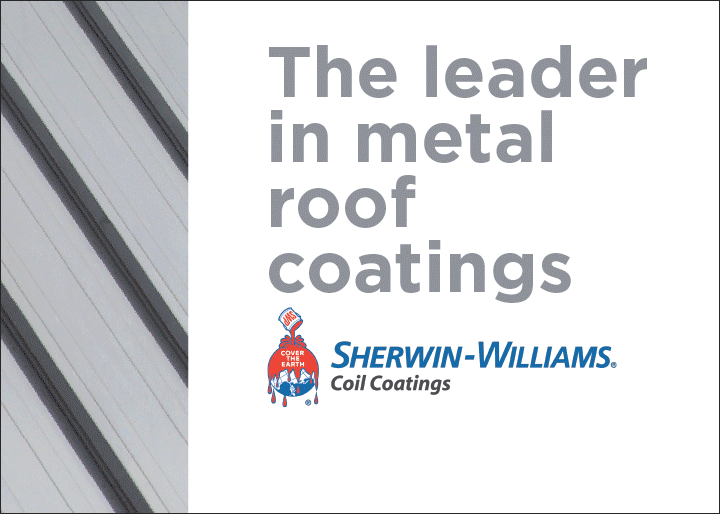
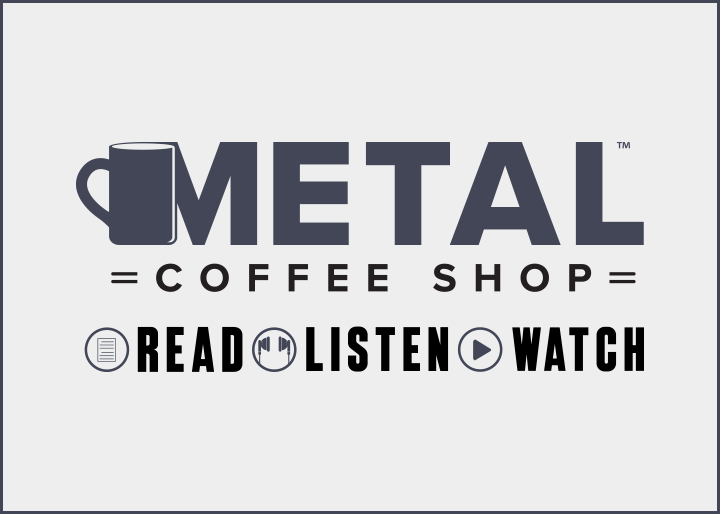

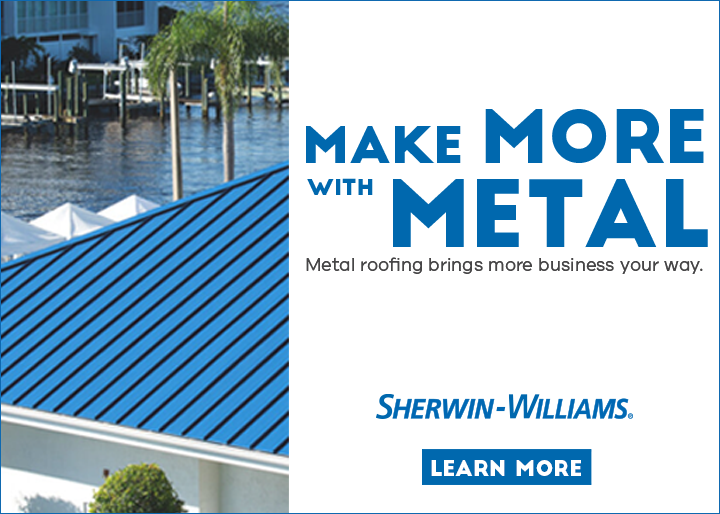
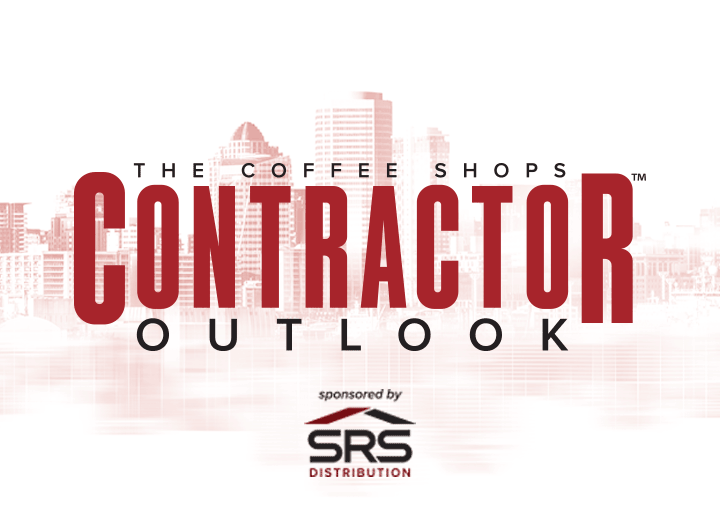
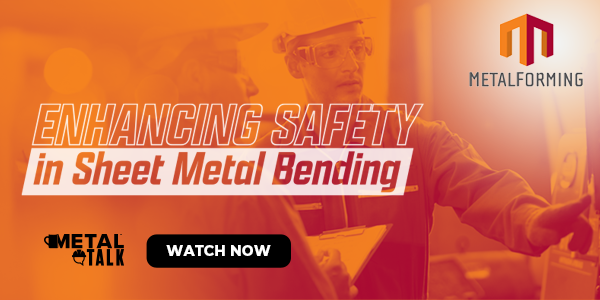
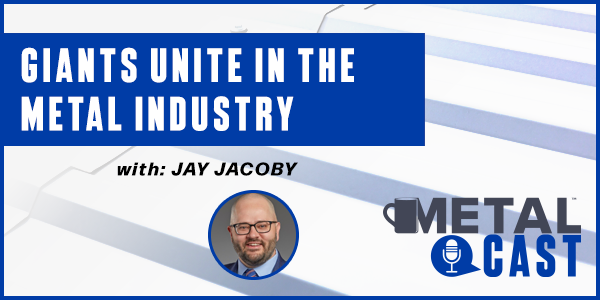
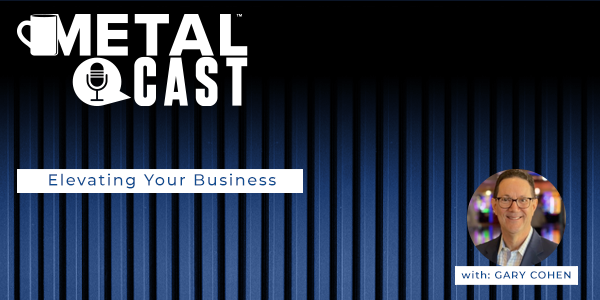
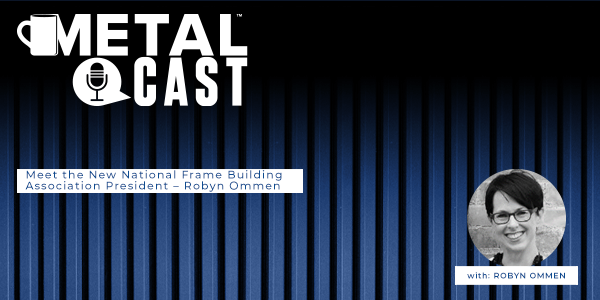

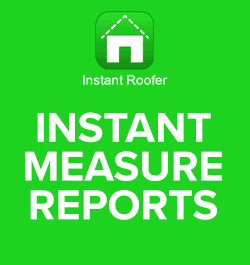



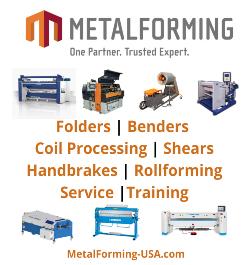
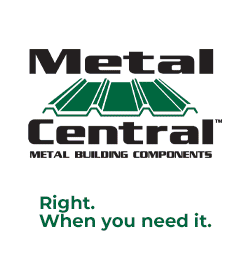
Comments
Leave a Reply
Have an account? Login to leave a comment!
Sign In